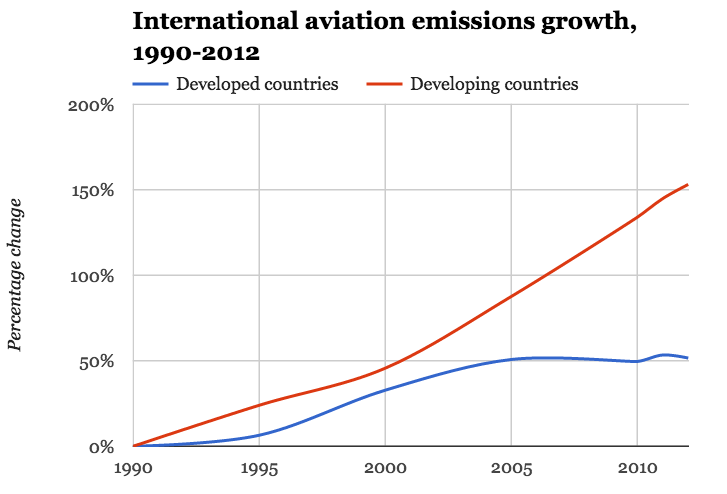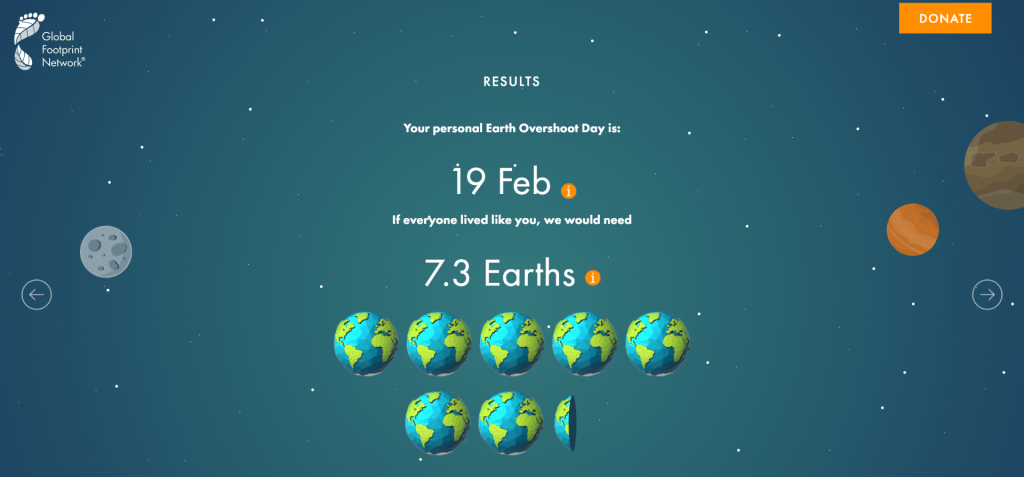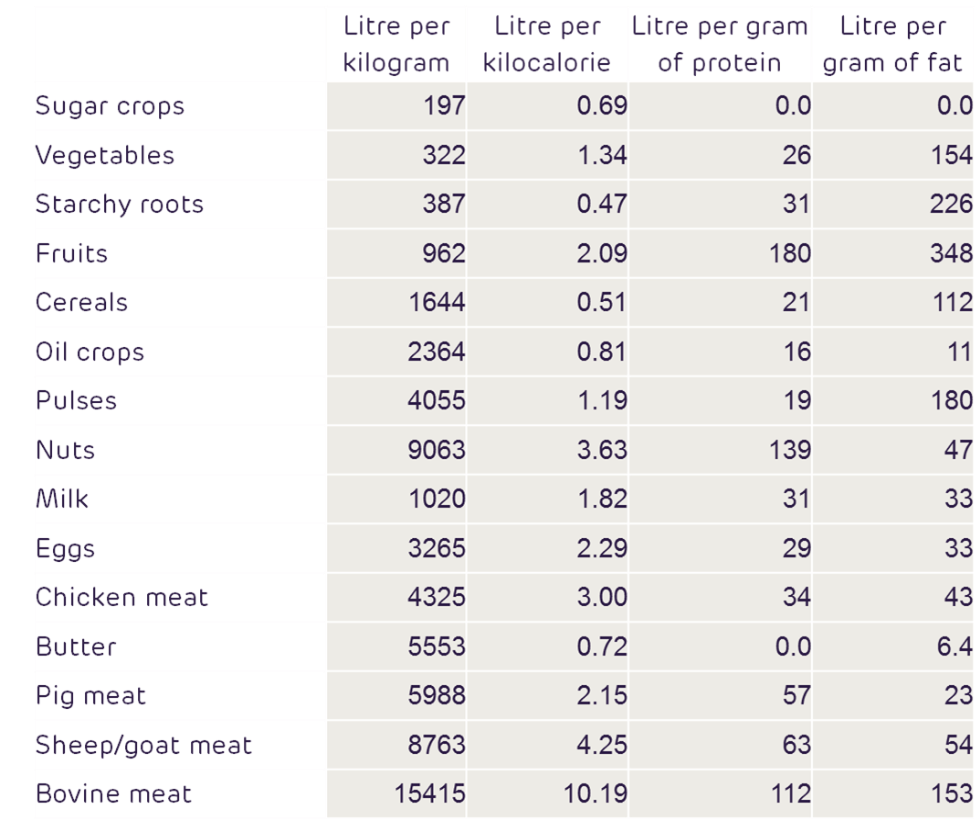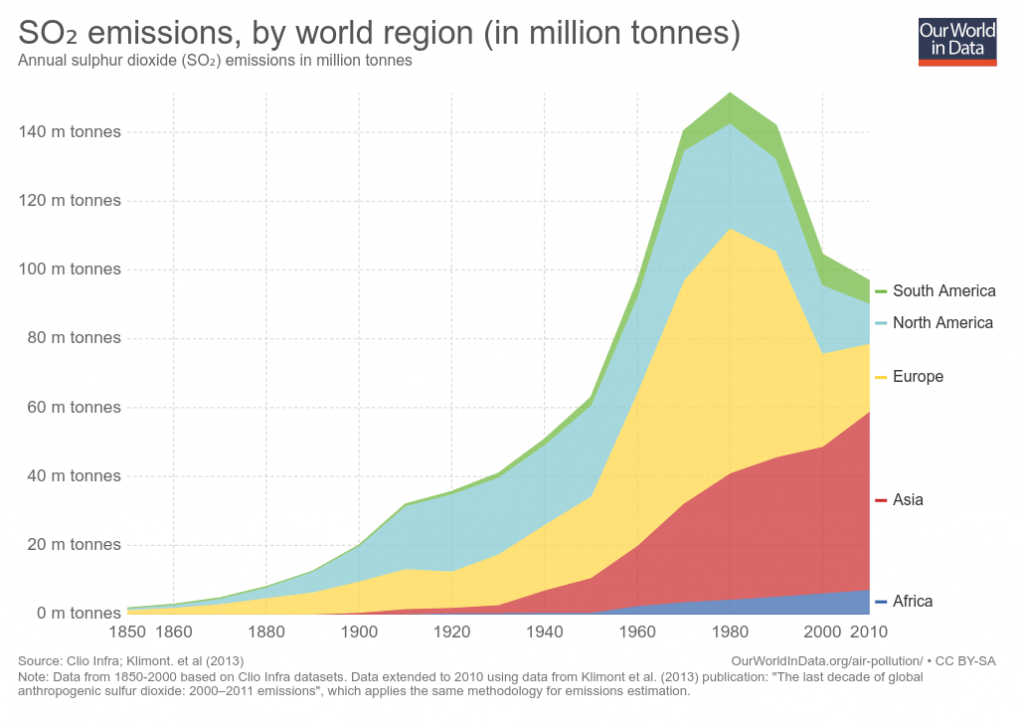Sustainability Podcast
Founders of Big Fish



The Ecological Footprint Calculator asks a series of questions ranging from how often you eat meat to how frequently you use public transport, and determines how many Earths we would need if everyone’s lifestyle was the same as yours. Having taken the test on your behalf, here are your results, Mr. Scott.
PS: They aren’t very good… That’s why we’re here.

Research Video Screencast
Areas for Improvement:
What You Can do
Plastic and Reusable Bags
Using reusable bags is an absolute must when it comes to living a more sustainable lifestyle, and is something everyone should do, considering how it requires minimal effort. While plastic bags, which are available at nearly all shops are a convenient and popular option, with billions of them being used each year, the damage they have on the environment collectively is immense. Plastic is a non-recyclable material, and as a result of this, most plastic bags end up in landfills, landfills being one of the worst things possible for the environment. Additionally, unlike materials such as paper and wood, plastic bags are non-biodegradable, meaning that they aren’t capable of being decomposed into the environment within short periods of time. Plastic bags can take thousands of years to biodegrade completely, and serve as a threat to wildlife in the process, with over 100,00 sea turtles and other marine animals dying each year as a result of consuming plastic waste.


On the other hand, reusable bags have virtually no downsides when compared to plastic bags, aside from sheer convenience (besides, how hard is it to carry a few empty bags?!). They conserve resources (it takes a lot to make plastic bags), decrease overall pollution, save wildlife from plastic threats, are more durable, and even save money (some stores charge for plastic bags). When one considers the pros and cons of both options, using reusable bags over plastic bags becomes an absolute no-brainer, and it’s the least we can do for our planet
Our Suggestions for You:
- Always take reusable bags with you whenever you or any of your family members goes out shopping.
- Never accept plastic bags, and if you absolutely have to, make sure you dispose of it responsibly.
- To prevent yourself from forgetting, put sticky-note reminders on places such as your front door, your fridge door, etc (the things you see every day). You should even try setting reminders for yourself on your phone on days you know you’re going to go shopping.
Sources:
https://totebagfactory.com/blogs/news/8-reasons-you-should-use-reusable-grocery-bags
https://www.businessinsider.com/can-you-recycle-plastic-bags-2016-2/?IR=T
https://www.sprep.org/attachments/Publications/FactSheet/plasticbags.pdf
Food Consumption
As good as meat may taste, there’s no denying the fact that the meat industry is one of the leading contributors to climate change and one of the least sustainable industries on the planet. Thousands of acres of forest and are being cut down to make room for more and more livestock. According to Smithsonian scientists, seven football fields worth of land is being cut down every minute to just to accommodate the spatial needs of the meat industry. Meat and dairy provide 18% of all calories and 37% of all protein, but use up 83% of all farmland and produce 60% of all greenhouse gas emissions that come from agriculture, with the excessive production of greenhouse gases (carbon dioxide, methane, nitrous oxide) being the primary cause of global warming itself. Though one would assume other industries would be contributing to global warming just as much, this is not the case. Producing just 2 pounds of beef gives out the same amount of greenhouse gases as driving for three hours would, or leaving all the lights on in your house for 3 hours. Greenhouse gases are also produced through animal feces, which pollute the air and contaminate the water. Livestock don’t just produce harmful substances, they use up extensive amounts of resources as well. In the U.S, humans are not the biggest consumers of water; livestock are. A common yet harmful practice involving livestock is a technique called overgrazing, which is where the animals are fed large amounts of food to ensure that the meat is of the highest quality possible. Not only is this unethical, but it also damages the environment and compromises the integrity of ecosystems and the life it comprises.
Another side effect of the meat industry is our enormous amount of water consumption. To produce 200 kilograms of boneless beef, we use over 3 million litres of water. This is a culmination of everything required during the cow’s 3 years before slaughter (grains, roughages, drinking water, farmhouse servicing, slaughter process). In a world where 844 million people don’t even have access to safe water, this is an absolutely ludicrous amount which isn’t sustainable even in the slightest.
A sustainable diet doesn’t only come down to what one eats, it’s also about how much food one wastes. Roughly one-third (1.3 billion tonnes!) of all food produced for human consumption is wasted every year, with the average person in a developed country throwing away around 95-115 kilograms within that same time frame. Additionally, rich countries waste almost as much food (222 million tonnes) as the total sum of all food production in sub-Saharan Africa (230 million tonnes), where the majority of the population doesn’t have anything to eat.

Our Suggestions for You:
- Try slowly cutting down on the amount of meat you eat. We’re not asking you to go vegan immediately, but instead to lessen the importance of meat within your diet, having learnt about the effects the meat industry has on our environment. Specifically, try to focus on cutting down your intake of red meats (beef and lamb are the two main culprits). If protein is what you’re concerned about, not to worry. There are several plant-based protein alternatives out there, such as:
- Soy products (tofu, edamame, tempeh)- These are also great substitutes for dairy products, as they are rich in calcium and iron. They contain 10 g, 8.5 g, and 15 g of protein per 1/2 cup respectively.
- Lentils- Rich in protein, fiber, iron, potassium, and contain 8.84 g of protein per 1/2 cup.
- Chickpeas- Can be eaten hot or cold, and contain 7.25 g of protein per 1/2 cup.
- Peanuts- Full of protein and healthy fats along with being heart-bolstering, these contain 20.5 g of protein per 1/2 cup.
- Almonds- Protein and vitamin E rich, these offer 16.5 g of protein per 1/2 cup.
- Spirulina- Rich in iron, vitamins, and manganese along with protein, containing 8 g per 2 tablespoons.
- Quinoa- 8 g of protein per cup, containing magnesium, iron, fiber, and manganese.
- Mycoprotein- 13 g of protein per 1/2 cup, and more of a meat substitute.
- Chia seeds- Rich in fiber and Omega-3; 2 g of protein per tablespoon.
- Hemp seeds- 5 g of protein per tablespoon.
- Beans with rice- 7 g of protein per cup.
- Potatoes- 8 g of protein per serving with plenty of potassium and vitamin C.
- Seitan- High in wheat and when cooked in soy sauce, 21 g per 1/3 cup.
- Ezekiel bread- 4 g of protein per slice.
- Check out, support, or join the Sense and Sustainability Club in school! Through this club, you can drop off your leftover food scraps from home at school, where they will be composted on campus, with the compost ending up supporting the school Urban Gardening Project and the East Farmers Market College Service Vegetable Box Delivery.
- Continue buying local produce, since food produced locally requires less transportation (and we know that transportation is a major source of global warming).
- Try some vegetarian-only meals on certain days during the week. We’ve chosen 3 of your favourite cuisines (Italian, Indian, and Mediterranean), and suggested veg-meals that don’t compromise on what you get with non-vegetarian food. Refer to this document for your veg-menu.
- Check out wet markets in Singapore. These reduce packaging + the amount of plastic used (don’t forget to bring your own bag!), and provide a bigger variety of local produce, which as we’ve established, is better for the environment. Bedok South Wet Market is a good option that’s relatively close to your address. Directions are shown below:
Sources:
https://livegreen.recyclebank.com/column/because-you-asked/why-are-landfills-bad
https://www.theguardian.com/environment/2018/may/31/avoiding-meat-and-dairy-is-single-biggest-way-to-reduce-your-impact-on-earth
http://thewaterweeat.com/
http://www.fao.org/save-food/resources/keyfindings/en/
https://www.medicalnewstoday.com/articles/321474.php
https://www.nationalgeographic.com/climate-change/how-to-live-with-it/health.html
Public Transport
Singapore has one of the most efficient public transport systems in the world, and not only is it an efficient and quick way to get around the city, it is also a much more environmentally friendly option than going around in a car. Cars and vehicles in general are major contributors to air pollution, with transportation emitting more than half the nitrous oxides in the air, and 30% of all carbon dioxide. This happens as a result of the burning of fossil fuels. Fossil fuels are used to power the cars’ engines, which in turn release toxic chemicals into the atmosphere, leading to the greenhouse effect. Most cars run on petrol, and petrol is a non-renewable resource, which means that it cannot replace itself quick enough to match the rate of its consumption. Cars are responsible for around 50-90% of all air pollution in urban areas, and a trend of air pollution can be seen in the graph below. Cars really started getting popular in the 1950s, and that’s when we see a sudden spike in sulfur dioxide emissions, which have risen sharply since.
Public transport, on the other hand, contributes next to nothing towards air pollution and emissions of greenhouse gases. MRTs and buses carry many people at once, eliminating the need of having that many cars on the road, while also being a much cheaper, safer, and more efficient way to travel, especially in Singapore. Now that society has started to realize the effects cars can have on the environment, action has started to be taken. Electric/hybrid cars have become much more popular nowadays, as their emissions are very low compared to regular cars which run on petrol. Car manufacturers have started to replace bigger engines with smaller yet more efficient engines, which means that you end up getting the same amount of power but from a smaller engine that’s more eco-friendly too. This is a result of engineering technology improving.
Our Suggestions for You:
- If you ever consider buying a new car in the future, do consider at electric/hybrid options. You seem like somewhat of a petrolhead, so we won’t recommend a Prius (though they are great eco-friendly options), and will instead recommend hybrids from Mercedes, BMW, and Audi, or a Tesla.
- Download Citymapper on your phone. It’s an app which finds you the best public transport routes to get to destinations around major cities all over the world, including Singapore. It gives you the specific MRT lines/bus numbers, live transit times, and the total price of each individual route.
We’ve gathered some of the places you visit the most in Singapore, and given you instructions on how to get there by public transport, instead of how you normally go there, by car. Whenever time isn’t a worry, we recommend leaving those Mercedes keys at home and using public transport instead. All of our directions start from Upper Changi MRT Station. Here are some of the places:
-
- Downtown line to Chinatown (32 mins)
- North East line to Harbourfront (6 mins)
- Sentosa Express to Sentosa (8 mins)
- School
- Downtown line to Tampines (5 mins)
- Walk to Our Tampines Hub Bus Station (5 mins)
- Bus 34 to Blk 867A Bus Station (4 mins)
- Walk to school (7 mins)
- Great World City
- Downtown line to Fort Canning (30 mins)
- Walk to Bef Fort Canning Bus Station (3 mins)
- Bus 195 to Opp Great World City Bus Station (8 mins)
- Walk to Great World City (2 mins)
-
- Walk to Upp Changi Bus Station (2 mins)
- Bus 24 to Tanah Merah Stn Exit A (9 mins)
- Bus 47/47A to Neptune Court (19 mins)
- Walk to ECP (7 mins)
- Turf City (You mentioned, “Not so much anymore because I’m too old.” Rubbish! Get moving!)
- Downtown line to Tampines (5 mins)
- East West line to Bugis (22 mins)
- Downtown line to Sixth Avenue (16 mins)
- Walk to Turf City (14 mins)
- Sunset Way (Father in law)
- Downtown line to Tampines (5 mins)
- East West line to Clementi (45 mins)
- Bus 185/189 to Logishub@Clementi (4 mins)
- Walk to Sunset Way (9 mins)
- Orchard
- Downtown line to Tampines (5 mins)
- East West line to City Hall (24 mins)
- North South line to Orchard (5 mins)
- Somerset
- Downtown line to Tampines (5 mins)
- East West line to City Hall (24 mins)
- North South line to Somerset (4 mins)
- Dhoby Ghaut
- Downtown line to Tampines (5 mins)
- East West line to City Hall (24 mins)
- North South line to Somerset (2 mins)
- Arab Street
- Downtown line to Jalan Besar (26 mins)
- Walk to Arab Street (10 mins)
- Parkway Parade
- Downtown line to MacPherson (18 mins)
- Walk to MacPherson Stn Exit B (4 mins)
- Bus 135/135A/43 to Opp Parkway Parade (13 mins)
- Walk to Parkway Parade (5 mins)
Sources:
https://citymapper.com/singapore
https://auto.howstuffworks.com/percentage-of-air-pollution-due-to-cars.htm
https://www.ucsusa.org/clean-vehicles/vehicles-air-pollution-and-human-health/cars-trucks-air-pollution
https://ourworldindata.org/air-pollution
https://www.thoughtco.com/public-transportation-for-fewer-emissions-1203955
Air Travel
Unlike public transport, flying is not a very sustainable mode of transportation, and a lot of carbon emissions are involved in the process. For the average household, flying is 6th on the list of activities that emit the most carbon emissions, but in households which take long-distance flights multiple times a year (like yours), it would very well creep up to the top of the list. Globally, the aviation industry is responsible for 2% of all carbon dioxide emissions, but that number is on the rise, as more and more people take to the skies. Like car engines, plane engines burn fossil fuels too, but at a much faster rate than that of ground-vehicles, and for much longer durations on average. However, this isn’t the only way the aviation industry contributes to carbon emissions, since building and maintaining airports is an equally damaging prospect. Deforestation is often required to create space for airports to be constructed, and managing all the airport infrastructure, be it the runways, terminals, transportation, etc, requires a lot of resources, and wouldn’t be sustainable in practice.

Our Suggestions for You
- When flying long distance to places such as Europe/Australia/New Zealand, always try and fly direct. Connecting flights often fly a greater distance, which would result in more greenhouse gases being emitted. Additionally, take-off and landing are the two stages of flight where fuel gets used least efficiently, and stopping over would double the amount of times you take-off and land, making the flight less sustainable.
- Refrain from flying business class too often, since it increases your personal footprint as a result of it physically occupying more space. Economy class maximises the amount of people on the plane, decreasing everyone’s carbon footprints.
- Participate in a carbon offsetting program, where after paying, companies will take action to compensate for your carbon emissions by doing something that neutralizes your carbon emissions, such as planting a tree after every flight you take. Check out UWCSEA’s very own carbon offsetting scheme, where they plan to plant 12,000 poplar trees which will end up helping Lamdon School, UWC’s Ladakh Global Concern community.
- Only fly the most ‘sustainable’ airlines, as ranked by atmosfair’s 2018 Airline Index. We’ve considered the locations you fly to most often, and chosen airlines that fly to those regions and are sustainable.
- Australia and New Zealand
- The best Australian option is Virgin Australia, with a score of 68.5 and rank 18.
- The best New Zealand option is Air New Zealand, with a score of 70.5 and rank 13.
- Do consider Qantas’s newly launched zero-waste flight if they expand it to Singapore routes (they plan eliminate 75% of all their waste by 2021).
- Europe
- KLM is the most sustainable major European carrier, with a score of 68.9 and rank 17.
- If going to other countries in Western Europe, consider landing in Amsterdam and taking the train to wherever your final destination is, if it’s close enough (trains are more eco-friendly than planes).
- Ryanair is the most sustainable domestic European option, with a B rank.
- Singapore Airlines is the best option for a direct flight to most major European cities, though it doesn’t rank too well at 67 with a score of 56.5,
- Southeast Asia
- The three most sustainable Southeast Asian carriers are Indonesia AirAsia, Lion Air, and Scoot, all achieving B ranks.
- Australia and New Zealand
Sources:
https://www.atmosfair.de/wp-content/uploads/aai2018-englischfarbe_final_mn.pdf
https://www.lonelyplanet.com/news/2019/05/10/qantas-zero-waste-flight/?utm_source=affiliatewindow-uk&utm_medium=affiliate&utm_campaign=affiliatewindow-UK&affil=aff-aw-uk&lpaffil=lp-affiliates
https://flygrn.com/page/sustainable-air-travel
Clothing Brands
One would be surprised to know how big of an effect clothing brands can have on individual carbon emissions. The process of making clothes themselves can be one that is pretty hazardous to the environment, especially if unsustainable materials are involved in the process. When choosing which brands to buy, it’s important to look past the surface (whether you simply like the brand’s image or not), and question whether this brand’s sustainability practices embody you as a person or not. Using the website ‘Good On You‘, we’ve gone through some of your favourite brands and found out whether they’re sustainable or not.
- Diesel
- Limited measures to reduce greenhouse gas emissions
- Bans fur and angora, but doesn’t specify wool and leather sources
- “Not good enough”
- Calvin Klein
- Aims to reduce emissions but doesn’t specify how
- Inadequate policies and lack of eco-friendly materials
- Uses leather, wool, down feather, angora, cashmere, etc with no sources
- “Not good enough”
- Banana Republic
- Member of the Sustainable Apparel Coalition and aims to reduce emissions by 2020
- Water reduction initiatives in place but uses non-eco friendly materials
- Uses animal products excluding fur and angora
- “It’s a start”
- Zara
- Tries to always use eco-friendly materials
- Has a 2020 deadline in place to end the emission of hazardous chemicals
- Bans most animal products but uses leather and down without stating sources
- “It’s a start”
- Rip Curl
- Donates to environmental groups who specialize in preserving surf spots
- Doesn’t provide much information about their own sustainability initiatives
- Uses wool and leather without sources but doesn’t use fur or angora
- “Not good enough”
- Quicksilver
- Aims to reduce carbon footprint but fails to report their performance
- Uses wool and leather without sources but doesn’t use fur or angora
- “Not good enough”
Our Suggestions for You:
- Out of these brands that you currently tend to buy from, prioritize Banana Republic and Zara, since they have the best scores sustainability scores out of all of the brands listed here.
- Consider buying from Marks & Spencer, since they are a relatively well-known brand name with a “good” rating, indicating that they do care about sustainability and eco-friendliness.
Sources:







